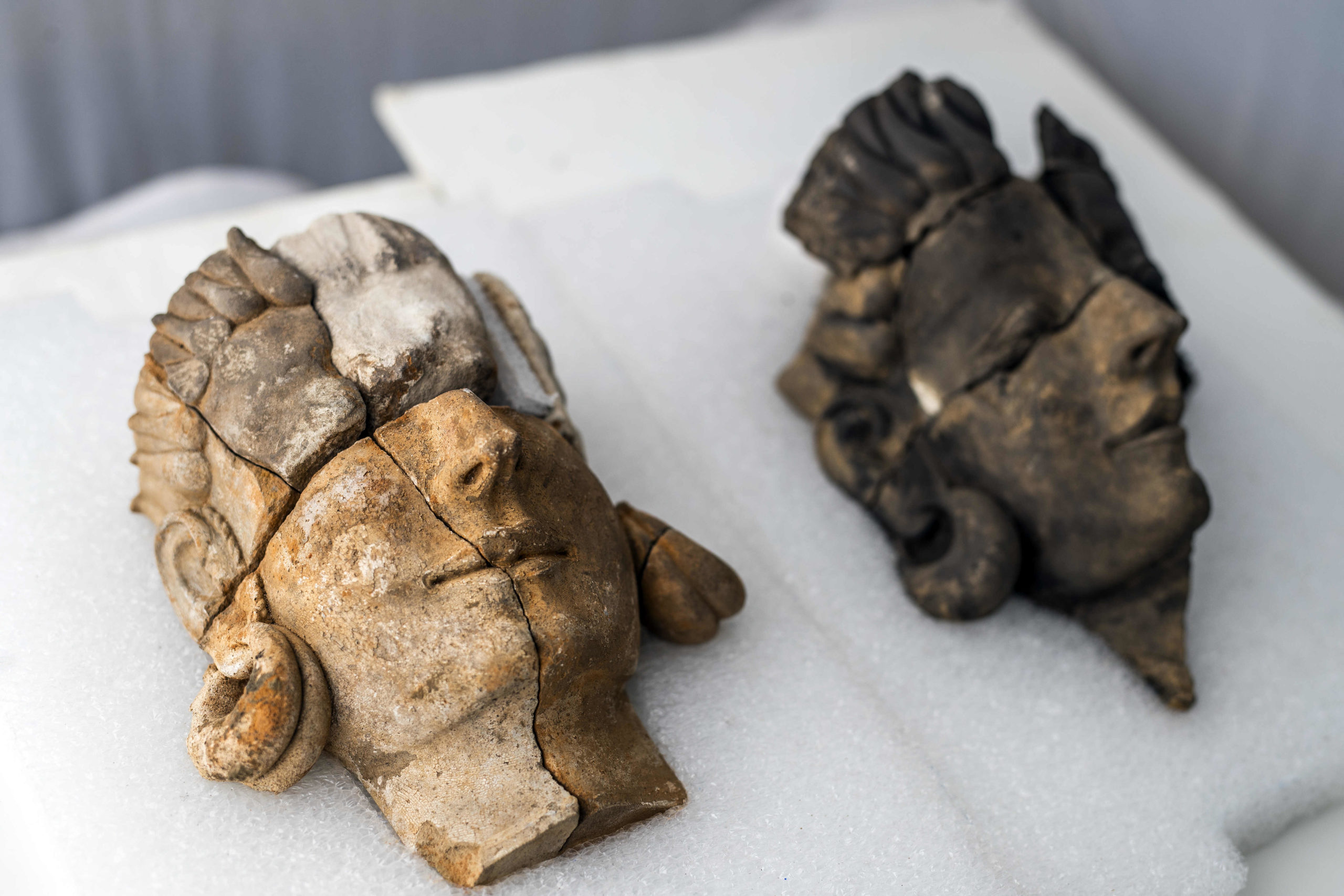
Spanish archaeologists have recently uncovered five life-size human busts that might be the first-ever human images of the Tartessos people. The Tartessos were a group of people who formed an ancient civilization that disappeared more than 2,500 years ago.
The stone-carved faces were found in a sealed pit inside a temple at Casas del Turuñuelo, an ancient Tartessian site in southern Spain. The pieces were mixed with animal bones, most likely from a mass sacrifice, according to a statement published on April 18.
The significance of the discovery lies in the fact that these human faces are a rare find in Tartessian culture. Erika López, a spokesperson for the Spanish National Research Council, stated that “the unusual thing about the new finding is that the representations correspond to human faces.”
Archaeologists from the Spanish National Research Council have hailed this discovery as a game-changer since the Tartessos civilization, which existed from the eighth to the fourth centuries B.C., was previously believed to be an aniconic culture where gods were represented through animal or plant motifs, rather than humans being idolized.
Goldsmith skills in Tartessos civilization
Two of the figures, likely female divinities, are nearly complete and wearing earrings, which could be a reference to the people’s expertise in goldsmithing during the Bronze Age. Archaeologists only found fragments of the other three reliefs but identified one as a warrior wearing a helmet.
Although the Tartessos civilization left few archaeological traces, it is known that they were skilled at creating intricate pieces of gold, similar to the earrings on the female divinity reliefs, according to Live Science.
Similar gold pieces were found at two nearby Tartessian sites, Cancho Roano and La Mata. However, both locations were torched to the ground in a similar way to the recently discovered pit site. The reasons for these burnings and how they occurred are still a mystery, according to a Vice article published on April 21.
Historians’ beliefs about Tartessos people
In the past, some historians believed that the Tartessos people might have been associated with the mythical lost city of Atlantis.
However, this theory has been mostly rejected by the scientific community, according to a BBC article from 2022.
History describes Tartessos (Greek:Ταρτησσός) as a semi-mythical harbor city at the mouth of the Guadalquivir on the southern coast of the Iberian Peninsula (in contemporary Andalusia, Spain). Beginning in the first millennium BC, it can be found in sources from Greece and the Near East.
Ancient Greek historical sources about Tartessos
Herodotus, the ancient Greek historian and geographer, refers to it as being past the Pillars of Hercules, the modern Strait of Gibraltar.
The ancient Greek philosopher and polymath, Aristotle, referred to Tartessos as a river. According to Aristotle, it originated in the Pyrene Mountain, which we can now identify as the Pyrenees, and flows out to sea outside the Pillars of Hercules.
In the 4th century BC the Greek historian Ephorus describes “a very prosperous market called Tartessos, with much tin carried by river, as well as gold and copper from Celtic lands”
The ancient Greek traveler and historian Pausanias claimed that Myron, the tyrant of Sicyon, constructed a treasury known as the treasury of the Sicyonians to celebrate a victory in the chariot race at the Olympic games. He constructed two bronze chambers, one in the Doric and one in the Ionic architectural styles, in the treasury. The bronze was Tartessian.
Pytheas, a Greek explorer and geographer who lived in the 4th century BC, was cited by Strabo in the 1st century AD as saying that the ancestral homeland of the pre-Roman people known as Turduli, was north of Turdetania, the area where the kingdom of Tartessos was situated in the Baetis River valley (the modern-day Guadalquivir valley) in southern Spain.
See all the latest news from Greece and the world at Greekreporter.com. Contact our newsroom to report an update or send your story, photos and videos. Follow GR on Google News and subscribe here to our daily email!



